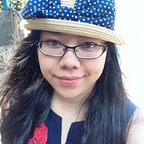Product Designer vs UI/UX Designer: Which one suits me?
The title of my job changed from UI/UX Designer to Product Designer after I renewed my contract.
I landed a new job in September 2020 as a UI/UX Designer. It’s been a year now and during that time I encouraged my team to conduct user research. Previously, the team rarely conduct user research hence I found chaotic user flows as well as the user experience. Furthermore, they didn’t have the data to prioritize features implementations. Instead of Agile, I feel like the process is more inclined towards the Waterfall methodology. In the technology industry, those terms are part of the Software Development Life Cycle (SDLC). Agile adopts iterative development, whereas Waterfall does not. Among the challenges of using the Waterfall methodology was dealing with change requests from customers during development and incorporating these changes at a high cost and time. Additionally, we don’t have many engineers.
The Waterfall methodology has a number of drawbacks for me such as, a flaw in design cannot be fixed; the whole process must start from scratch after the problem is identified and it ignores the possibility of receiving mid-process feedback from a client or user and making changes based on these comments.
While the Waterfall methodology is still part of our processes, I have tried to minimize its drawbacks to make them more Agile. My design process always starts with a paper wireframe and a low-fidelity mockup so I can collect feedback faster. Communication with the Product Managers and Engineers is the crucial part. As designers, we need to understand the business process and negative cases on the user flow in order to make sure everyone is on the same page.
My encouragement of the team to conduct user research periodically allows us to prioritize feedbacks and assign a status level (critical, serious, medium, low) to each. We now have valuable data, which we can use to improve the design. I’m also delighted to communicate with our users and lead the interview process.
A month ago, I renewed my contract and I had a great discussion with my CEO. We mostly discussed about my new role as a Product Designer. There may be some confusion among nontechnical people about these terms: Product Designer, UI/UX Designer, Interaction Designer, etc. However, this also happens within startups.
Product Designer is actually the new title I proposed to the CEO instead of UI/UX Designer. In light of this, we discussed my new role. Firstly, in an email, I was requested to explain to him both the definition and the responsibilities associated with a Product Designer.
Interestingly, the same question was also posed by a fellow designer on my Instagram account. She also asked the differences between Product Designer and UI/UX Designer. Basically, those terms are interchangeable. Product Designers are in charge of the entire product creation process. They are ultimately responsible for discovering and defining a problem, and then emphatically designing a solution. They take part in user research, prototyping, visualization, testing, analyzing and communicating.
According to my understanding, the thing that should be emphasized is the primary skills of a Product Designer lies in a high level of business acumen and the decision making. There might be differences in the way people acquire these skills, though. In this case, I learn the skills from the Growth team which is the CEO and Key Account Manager. Personally, I appreciate the different perspectives the team offers. This way I can connect the dots of why things work that way as well as the reasons behind feature implementations. Even though our discussion will always include arguments, I can still learn from them. I am not only able to gain an understanding of the negative and positive arguments, but also of human nature.
Next, there are a few things that make these two disciplines different. A Product Designer is not only advocating for the users but is also an advocate for the organization hence this person works on the customer experience as well; should need a better understanding of business and product. While, a UI/UX designer is responsible for the appearance (interface) and experience of a product, such as an application or website. The priority is usability.
The next question is, in what ways do a Product Designer and a Product Manager differ in terms of responsibilities?
A Product Designer, according to my understanding, is responsible for creating great user experiences and proposing solutions (research users and their problems) while a Product Manager is accountable for the business value such as project scope, team goals and strategy, success criteria and project goals, data analysis, and sales calls.
It has been a pleasure to learn so much, about different types of products, various job responsibilities, company structures, and people as well, during my career journey 😊
